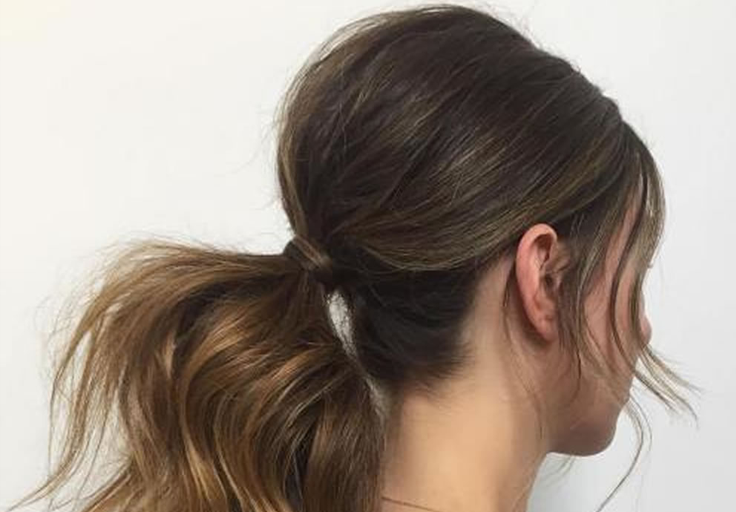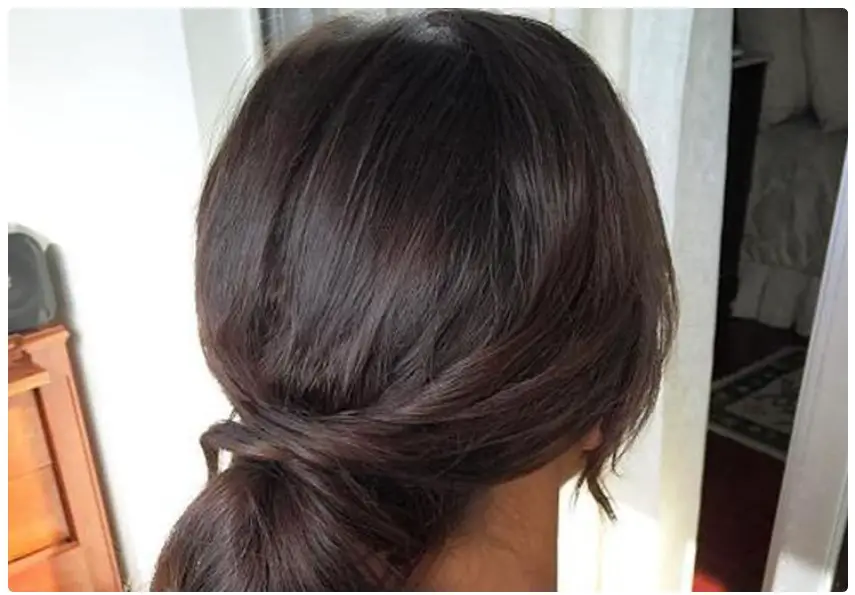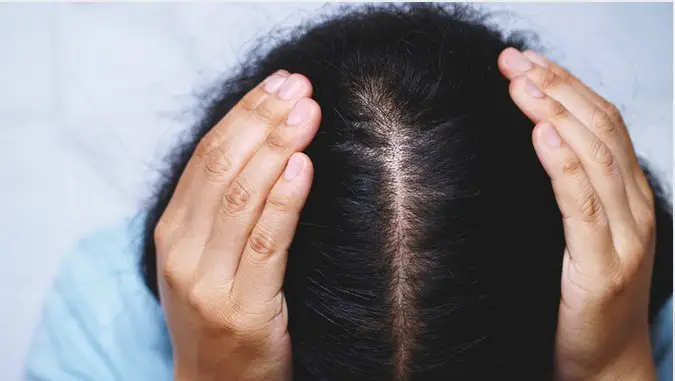Have you ever seen someone with long, beautiful hair only to wonder how to tie hair to prevent hair loss when styling it in a ponytail or bun? You may do more harm than good if you regularly tie your hair up into a bun or ponytail. There are many ways and tips to avoid tying your hair that can pull on your hair follicles that cause breakage, called traction alopecia, which means you end up with less hair than before!
How to Tie Hair to Prevent Hair Loss
By tying your hair in different ways, you can prevent some of the hair loss that commonly happens when you wear it up all day long. However, there are many benefits to tying your hair up when it comes to preventing hair loss and protecting your scalp from breakage and irritation. You must choose the right kind of updo or ponytail when you know how to tie your hair properly. Keep reading this article to learn more about five ways to tie your hair up to prevent future hair loss, thinning hair, and gaining thicker locks in the process!
Step 1): Never tie your hair up when it’s wet
If you tie your hair up when wet, you’re likely to create a snag that will cause you grief later. Instead, please wait until it’s dry before pulling all of your hair into a ponytail. That way, if there is a snag, it will be easier to fix before it becomes an issue. The same goes for tying back curly or wavy hair—don’t do it when you’re still in the shower or have just gotten out!
Step 2): Give your hair a break with different styles
While it’s unnecessary, many women wear their hair similarly each day; sometimes, that can be a mistake. Over time, your hairstyle can cause breakage (as can chemical treatments, but we’ll discuss that later). By trying different styles once or twice a week — especially ones that stress your hair by pulling it back tight or using clip-in extensions — you give your hair a chance to repair itself without you even noticing. There are tons of different styles: buns, braids, ponytails, twists…no matter what styles you choose, your hair will thank you for taking a break! Most importantly: Be patient and don’t expect miracles overnight; healthy hair takes time.
Step 3): Don’t pull the hairline too tightly
It can cause traction alopecia and hair loss due to friction from tight hairstyles. Once the follicles have been damaged, the only way to get them back is with a laser hair growth device. So make sure you’re not tugging your hairline too tightly. Even when you tie up a ponytail or bun, pulling on the ends is common and creates a lot of tension on your scalp. The less stress you put on your hairline and strands, the healthier they’ll be over time!
Step 4): Use a serum on your hair before putting it into a pony
Many hair serums are on offer, and all claim to prevent hair loss and thinning hair. Typically, regrowth serum products can help treat your scalp and hair. Use a serum on your hair before putting it into a ponytail or a bun, as you will ensure that you have all areas of your scalp covered. Apply it directly from mid-length down to the ends of your hair – but don’t forget about your parting! The serum will help prevent breakage, thinning, or loss of length due to constant pulling by holding up strands.
Step 5): Use fabric hair ties
When there’s so much going on in our lives, it’s understandable that we might neglect taking care of our hair. Many women don’t realize they suffer from hair loss until they see thin patches on their scalps or notice their ponytails have shrunk. Try using fabric hair ties whenever possible to reduce stress and prevent further damage. They aren’t nearly as damaging to your hair as plastic ones are, and they can also come in stylish colors or patterns—making them a great fashion accessory! Try tying your hair up at night with a satin ribbon; you may be surprised by how much better your head feels after sleeping on it.
FAQ’s: Of Ways to Tie Your Hair to Prevent Hair Loss
What happens if you tie your hair everyday?
If you want to tie your hair up every day, be sure to do it in a way that doesn’t stretch your hair too much. Tying your hair up every day can cause damage and lead to breakage. If you have damaged hair already (which you probably will if you’re tying your hair up often), try cutting off all of your ends, as these are most susceptible to breakage from ties and ponytails.
What is the best way to wear hair to bed to prevent breakage?
Many hair breakages occur during sleep. To prevent breakage,
- wear your hair up while you sleep.
- If you are prone to tight braids and ponytails, put on a satin scrunchie cap or scarf before bed to prevent knots and breakage.
- Loose buns also help with keeping braids loose during sleep.
- For best results, wrap your hair in a satin scarf or bonnet for overnight sleeping.
Does tying hair cause hair loss?
If you tie your hair too tightly, then it could lead to temporary hair loss. For short-term tying, it may not cause a problem. However, if you’re binding hair for long periods or using tight ponytails and braids repeatedly, it could damage your follicles and potentially cause permanent hair loss. There is some debate as to whether frequent ponytails lead to permanent damage—or if they are uncomfortable.
Can you regrow hair from traction alopecia?
Yes, If you’re experiencing traction alopecia, you can treat it by avoiding braids, cornrows and ponytails in favor of loose twist hairstyles that won’t put additional stress on your follicles. In severe cases, surgical hair restoration could be an option. Using a wig while your follicles heal is also a viable solution. As with any medical condition, be sure to consult with your doctor before choosing a treatment method.
Some of these hair loss products can help you treat traction alopecia without a traction alopecia hair transplant surgery (using traction alopecia treatment like Finasteride, Minoxidil, serum and laser cap) to help stimulate hair growth.
What are the signs and symptoms of traction alopecia?
Traction Alopecia is a condition that can occur in people with fine hair if the hair is pulled tight against the scalp over time. Symptoms of Traction Alopecia are:
- A noticeable thinning of the hair at the crown of your head and then, eventually, full-on balding can occur.
- Itchiness
- Scaling
- Sores
- Pus-filled blisters on the scalp
- Redness of the scalp
- Bumps
- Hair follicles Inflammation (also called “folliculitis”)
- Receding hairline
- Hair loss and bald spot on the crown
It can take years for Traction Alopecia to develop into baldness, however. If you’re concerned that you’re experiencing the effects of traction alopecia, it’s wise to seek early Traction Alopecia treatment.
Finally
How to tie hair to prevent hair loss, you must avoid hairstyles that are too tight. When hair is wrapped up all day, it tends to become dry. So, if you’re tying your hair up in a formal style for work each morning, consider using moisturizing lotion or serum on your hands before beginning. This will make sure that no damage is done from day-to-day wear and tear. (Bonus: many serums and lotions also come with UV protection—so they’ll keep you looking young and healthy.)
- AI Powered Bald Filter Online 2024: See Yourself with No Hair! - January 19, 2024
- Harklinikken Bad Reviews 2024: Analyzing Negative Feedbacks - January 18, 2024
- How to Get the Alex Eubank Hair | Step-By-Step Tutorial 2024 - January 18, 2024







